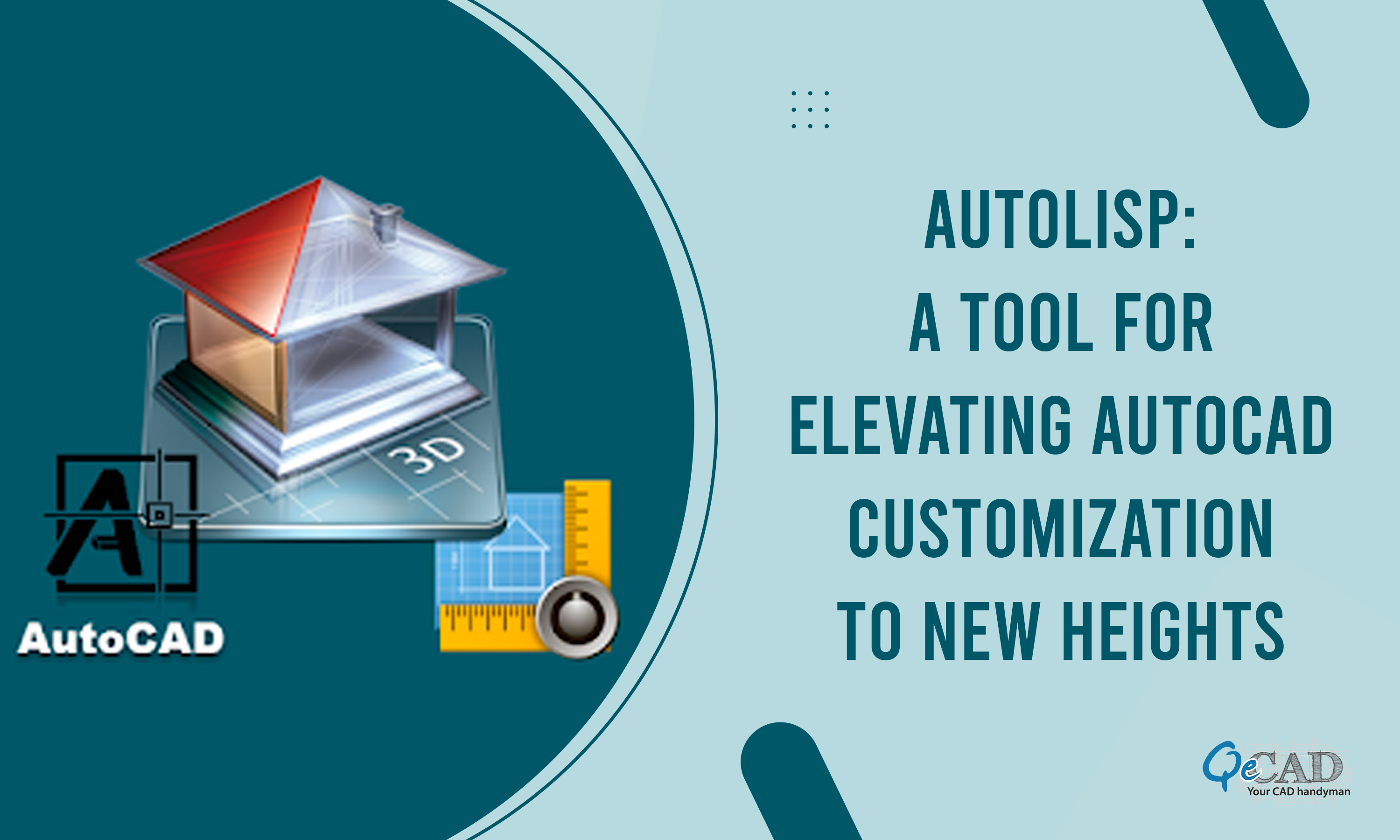
Introduction:
AutoCAD has long been the cornerstone of the design and drafting world, providing engineers, architects, and designers with an influential platform to breathe life into their ideas. While AutoCAD comes equipped with a plethora of features to provide precise CAD Services, its true potential is unlocked through customization. One of the most potent tools in the customization toolkit is AUTOLISP, an integral part of AutoCAD that empowers users to script and automate tasks, turning mundane processes into efficient, automated workflows.
Understanding AUTOLISP:
AUTOLISP, derived from AutoCAD Lisp, is a programming language by Autodesk. Rooted in the List Processing (LISP) programming language, AUTOLISP is specifically designed for customizing AutoCAD. It serves as a bridge between the user and the software, enabling the creation of custom commands, automation of repetitive tasks, and the addition of new functionalities to meet specific project needs.
Key Features and Benefits:
- Automation of Tasks:
AUTOLISP excels at automating routine tasks, reducing the burden of manual labour and minimizing the risk of errors. This capability is particularly valuable for designers and drafters dealing with complex drawings and repetitive operations. From creating intricate geometry to manipulating objects and settings, AUTOLISP scripts offer a dynamic solution to streamline workflows.
- Custom Commands:
One of the standout features of AUTOLISP is its capacity to create custom commands. This capability allows users to design commands tailored to their specific requirements, transforming frequently used actions into efficient, one-word commands. The result is a CAD environment that aligns with individual preferences and project demands, enhancing overall productivity.
- Parameter Manipulation:
AUTOLISP enables dynamic manipulation of parameters within AutoCAD, giving rise to intelligent drawings. This functionality is particularly advantageous in parametric design, where changes to one element automatically propagate throughout the drawing. This not only conserves time but also amplifies the flexibility and responsiveness of the design process.
- User Interface Enhancement:
AUTOLISP extends its influence to the user interface, enabling users to create custom dialog boxes and menus. This functionality improves the overall user experience by offering an intuitive interface for engaging with personalized tools and features. Designers can optimize their workspace, placing essential tools at their fingertips for a more efficient and personalized design environment.
- Integration with External Data:
AUTOLISP facilitates seamless integration with external data sources, allowing for the import and export of information between AutoCAD and other applications. This capability fosters collaboration in multi-disciplinary projects, where data exchange and interoperability are critical. AUTOLISP ensures that AutoCAD remains a central hub in the broader ecosystem of design and engineering tools.
Getting Started with AUTOLISP:
For those venturing into the world of AUTOLISP, the learning curve is manageable, and the rewards are significant. Creating simple scripts can be done using any text editor, while more advanced development benefits from tools like the Auto LISP Integrated Development Environment (IDE) within AutoCAD. Autodesk provides comprehensive documentation, and online communities offer a wealth of examples, tutorials, and forums where users can seek assistance and share insights.
Real-world Applications:
- Batch Processing:
AUTOLISP excels in batch processing tasks. For instance, a script can be developed to automate the conversion of multiple drawings from one file format to another. This not is time savvy but also guarantees consistency throughout a project.
- Standardization:
Design firms often have specific drafting standards that need to be adhered to for consistency. AUTOLISP scripts can enforce these standards automatically, reducing the likelihood of errors and making sure that entire team adheres the same guidelines.
- Dynamic Block Creation:
AUTOLISP is instrumental in creating and manipulating dynamic blocks within AutoCAD. This feature allows designers to build intelligent, parametric blocks that adapt to changes in the drawing, providing a more flexible and efficient design process.
Conclusion:
AUTOLISP emerges as a linchpin in the realm of AutoCAD customization, offering users the means to shape their CAD environment according to their unique needs. As technology continues to advance and push its limits for Drafting Services, the role of customization tools like AUTOLISP becomes increasingly pivotal. By empowering users to automate, streamline, and personalize their workflows, AUTOLISP ensures that AutoCAD remains at the forefront of innovation, driving creative and efficient design solutions. As designers continue to explore the possibilities of customization, AUTOLISP stands as a testament to the adaptability and resilience of AutoCAD in the ever-evolving world of design.
